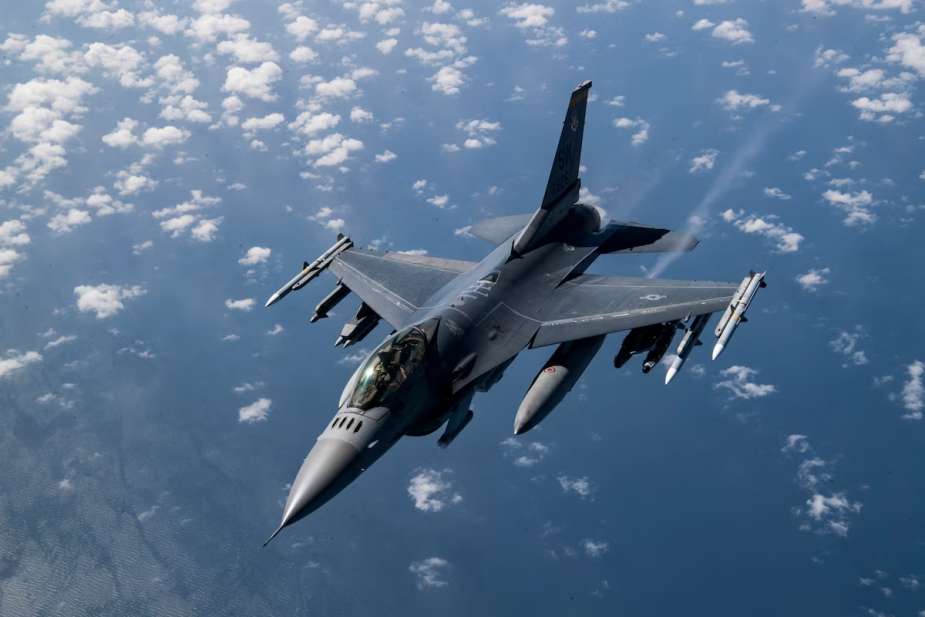Breaking news
Ukraine Announces F-16 Fighter Jets Would No Longer Be Relevant.
Ukrainian military officials have expressed skepticism regarding the relevance of US-made F-16 fighter jets, which are expected to arrive in Kyiv later this year, suggesting that they are no longer suitable for combating Russian forces. This was reported by a Ukrainian military source in Politico.
Follow Army Recognition on Google News at this link

US-made F-16 fighter jets. (Picture source: US DoD)
Previously hailed as potential game-changers in Ukraine's defense strategy, the deployment of these aircraft has been the subject of intense debate among various nations assessing their effectiveness in Ukrainian airspace. Approval for the deployment of the F-16s was granted by Washington in August 2023, on the condition that Ukrainian pilots undergo intensive training in allied nations to ensure effective use of the aircraft.
The F-16 A/B Fighting Falcon is a multi-role aircraft developed by General Dynamics, now Lockheed Martin. Widely used in various air forces around the world, it remains in service today. Having made its maiden flight on February 2, 1974, it was officially commissioned on August 17, 1978, and remains operational.
This aircraft is designed to be piloted by a single pilot, although two-seater versions are also available for some variants. Powered by a Pratt & Whitney F100-PW-229 engine, the F-16 is equipped with an afterburning turbojet engine, providing a thrust of up to 130 kN.
In terms of its dimensions, the F-16 has a wingspan of 9.8 meters, a length of 14.8 meters, and a height of 4.8 meters, with a wing area of 27.87 square meters. Its mass characteristics include an empty weight of 8,272 kg, which can go up to 16,900 kg at full load, including its armament.
In terms of performance, the F-16 can reach a maximum speed of 2,173 km/h (Mach 2.04) and an operational ceiling of 15,200 meters. Its rate of climb is impressive, reaching up to 15,240 meters per minute, with a range of 550 km. Its armament includes a 20 mm M61A1 Vulcan cannon, as well as various air-to-air and air-to-ground missiles, laser-guided bombs, and rockets.
However, according to a senior military official who spoke anonymously to Politico, the timing of weapon acquisitions is crucial in the context of ongoing conflicts, and the F-16s are deemed unsuitable for Ukraine's current needs. "In warfare, the relevance of weapon systems is time-sensitive. The F-16s were sought after in 2023; however, their utility in 2024 is questionable," said the official.
Emphasizing the importance of timely weapon deliveries, the official highlighted the decisive impact of anti-tank missiles supplied by the UK and the US during the early stages of the conflict. He warned against prolonged delays, stating that the longer it takes to receive weapons, the less impact they will have on the battlefield.
Currently, there is an urgent need in Kyiv for conventional ammunition and drones in significant quantities to counter Russia's offensive capabilities. "We need artillery pieces, ammunition in the hundreds of thousands, and millions of drones," emphasized the official, estimating the staggering quantities necessary for Ukraine to achieve victory.
Acknowledging the imminent risk of frontline collapse in the absence of adequate weaponry, officials admitted that Russian forces could exploit vulnerabilities in Ukrainian defenses. Moscow's sustained aerial bombardment of Ukrainian positions with precision-guided munitions has heightened concerns about potential breaches in the frontline.
While these aircraft were in demand in 2023, it appears that some Ukrainians no longer consider their arrival relevant but would rather prefer artillery ammunition, the demand for which is extremely high to stem Russian advances. Thus, the Czech initiative would seem to be more accurate than any F-16 delivery expected soon.























